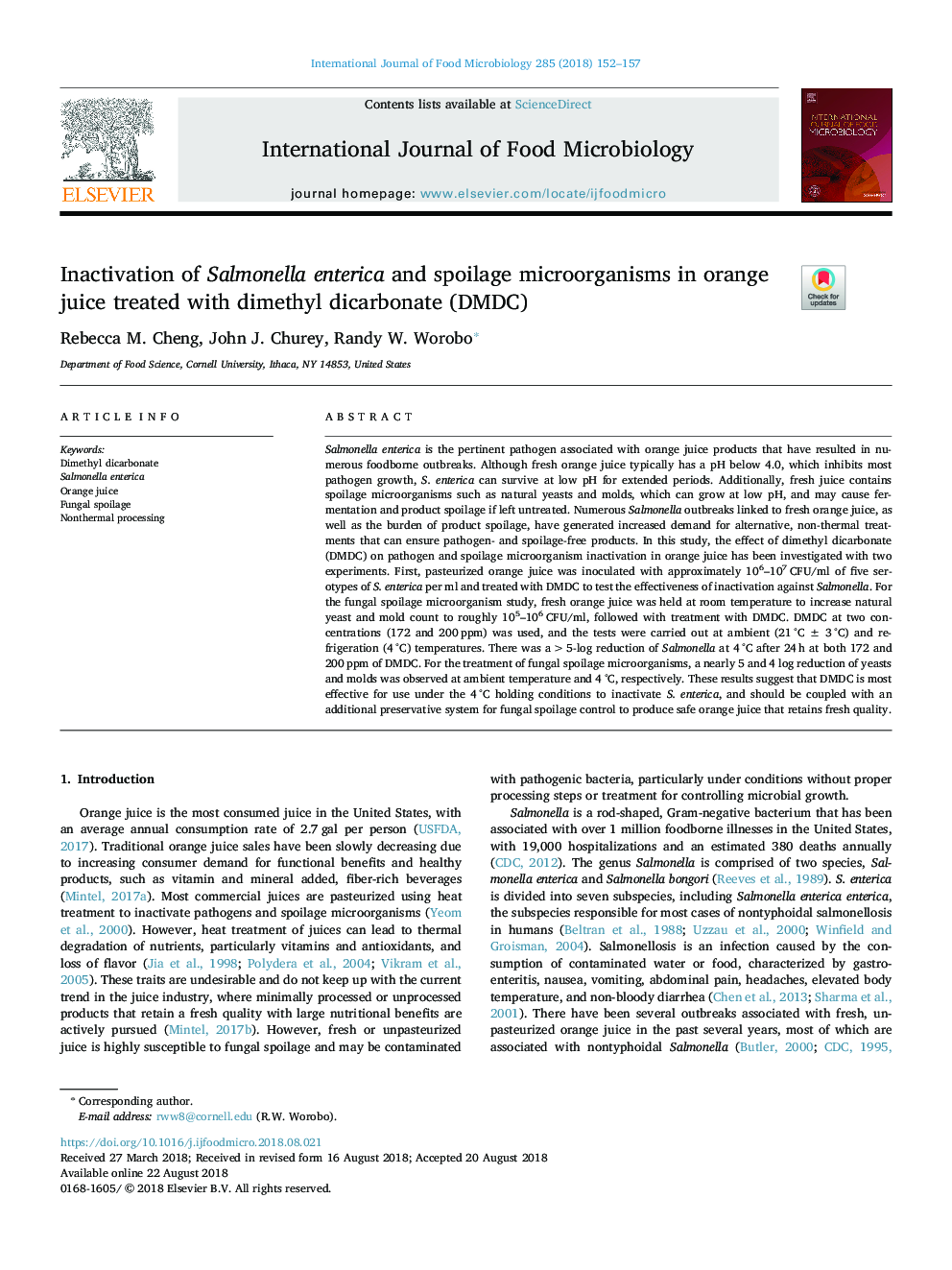| Article ID | Journal | Published Year | Pages | File Type |
|---|---|---|---|---|
| 8844078 | International Journal of Food Microbiology | 2018 | 6 Pages |
Abstract
Salmonella enterica is the pertinent pathogen associated with orange juice products that have resulted in numerous foodborne outbreaks. Although fresh orange juice typically has a pH below 4.0, which inhibits most pathogen growth, S. enterica can survive at low pH for extended periods. Additionally, fresh juice contains spoilage microorganisms such as natural yeasts and molds, which can grow at low pH, and may cause fermentation and product spoilage if left untreated. Numerous Salmonella outbreaks linked to fresh orange juice, as well as the burden of product spoilage, have generated increased demand for alternative, non-thermal treatments that can ensure pathogen- and spoilage-free products. In this study, the effect of dimethyl dicarbonate (DMDC) on pathogen and spoilage microorganism inactivation in orange juice has been investigated with two experiments. First, pasteurized orange juice was inoculated with approximately 106-107â¯CFU/ml of five serotypes of S. enterica per ml and treated with DMDC to test the effectiveness of inactivation against Salmonella. For the fungal spoilage microorganism study, fresh orange juice was held at room temperature to increase natural yeast and mold count to roughly 105-106â¯CFU/ml, followed with treatment with DMDC. DMDC at two concentrations (172 and 200â¯ppm) was used, and the tests were carried out at ambient (21â¯Â°Câ¯Â±â¯3â¯Â°C) and refrigeration (4â¯Â°C) temperatures. There was a >5-log reduction of Salmonella at 4â¯Â°C after 24â¯h at both 172 and 200â¯ppm of DMDC. For the treatment of fungal spoilage microorganisms, a nearly 5 and 4 log reduction of yeasts and molds was observed at ambient temperature and 4â¯Â°C, respectively. These results suggest that DMDC is most effective for use under the 4â¯Â°C holding conditions to inactivate S. enterica, and should be coupled with an additional preservative system for fungal spoilage control to produce safe orange juice that retains fresh quality.
Related Topics
Life Sciences
Agricultural and Biological Sciences
Food Science
Authors
Rebecca M. Cheng, John J. Churey, Randy W. Worobo,
